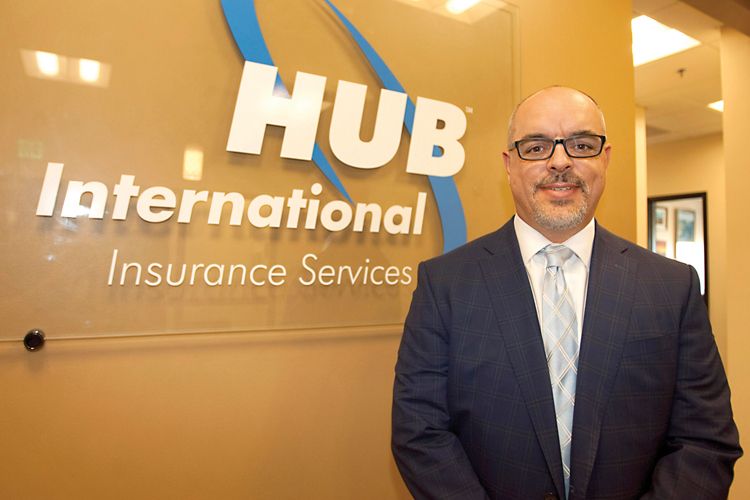Self-insured health plans grow in Colorado

LOVELAND – While self-funded insurance plans are certainly on the rise, there is a good reason to pause before blaming the crisis on the Patient Protections and Affordable Care Act, or Obamacare, as some are likely to name it.
“At the end of the day, insurance costs are driven by claims cost, driven by the costs in the hospital environment,” said Jim Sampson, vice president, employee benefits consultant at Hub Colorado in Loveland. “Putting a self-funded plan in place (in and of itself) won’t save a company any money.
“The beauty of self funding is you, as an employer, start to understand where your dollars are going,” he added. “With traditional insurance, they take all the risk and take all the reward. That’s pretty revolutionary for employers that have never been self funded.”
SPONSORED CONTENT
Colorado is slightly ahead of the nation as a whole in self-funded corporate health plans, but both the state and the nation have seen a steady increase in such plans since at least 2005, according to information from the Division of Insurance of the Colorado Department of Regulatory Agencies. In 2005, about 32 percent of businesses had at least one self-funded plan, which could be dental or even a plan for co-pays, and in 2015, that number had increased to 39 percent nationally and 43 percent in Colorado.
These numbers are a little dicey, said Vincent Plymell, communication manager of the insurance division, because companies with self-funded plans are not regulated by the state; they fall under federal regulation through the Employee Retirement Income Security Act. Plymell said the state gets its numbers from U.S. Census Bureau information because companies with self-funded plans do not report to the state.
Even though he would caution companies looking at self funding purely to save money, Sampson said there are clear benefits for the right company. In fact, of the 40 firms he is now working with, only four are totally insured through traditional health-care policies. Most of his clients are mid-sized companies, but he does have one self-funded company that has only 12 employees.
“If you are a bad (risk) company with full insurance, you are going to be a bad company self funded,” Sampson said. “The difference is you now know what your claims say you are.”
For small- to mid-sized businesses, self funding hardly means going without insurance. Most plans have two stop-loss measures, one for individuals and one for the company as a whole.
“If you have a $500 premium for employees, roughly 50 percent will go to claims, and 50 percent will go to fixed costs,” Sampson said. In a bundled plan, which are now offered by almost all major health insurance companies, of the $250 in fixed costs, about $50 would go for administrative costs.
The remaining $200 would go to pay for the stop-loss insurance, $180 (roughly speaking) would go to pay for an individual stop-loss, which would insure individuals in catastrophic consequences, Sampson said. The last $20 would go to an aggregate stop-loss insurance plan to protect the company in case a number of cases turn up in any given year.
So if it’s a company with 100 employees, that means there is $300,000 to pay off claims. Any money left over could be kept by the company, but that’s not a real good bet, Sampson said.
“It’s not uncommon to see one individual have more than $300,000 in claims, so obviously that one person could blow up your plan,” he said.
That’s where the stop-loss plans would kick in — perhaps for the individual or for the company in aggregate. Stop-loss insurance is actually offered by a number of large insurance companies that don’t work in any other phase of health insurance.
But there are other decisions, as well. For instance in a bundled plan offered by some of the major insurers, it really appears to the employees as if they were covered by that company. In an unbundled plan, however, the company could be shopping for its stop-loss insurance, as well as deciding what company will host its physician and pharmacy services.
One thing that is different with a self-funded plan, however, is once a company sees where its claim money goes, it can take steps to reduce those costs — for instance if there is too much reliance on emergency-room services.
“As you (the company) become more mature in monitoring those costs, then that would be the reason to be more aggressive (in proactive health measures),” Sampson said.
There have been some reports that states might look to regulate stop-loss insurance coverage, as a means of increasing participation in the ACA, but that doesn’t appear to be the case in Colorado. Doing without that coverage really isn’t an option for most of the state’s employers, Sampson said.
“You’d have to be a huge employer, but first they’d drop aggregate stop loss,” he said, not the individual stop loss.
LOVELAND – While self-funded insurance plans are certainly on the rise, there is a good reason to pause before blaming the crisis on the Patient Protections and Affordable Care Act, or Obamacare, as some are likely to name it.
“At the end of the day, insurance costs are driven by claims cost, driven by the costs in the hospital environment,” said Jim Sampson, vice president, employee benefits consultant at Hub Colorado in Loveland. “Putting a self-funded plan in place (in and of itself) won’t save a company any money.
“The beauty of self funding is you,…
THIS ARTICLE IS FOR SUBSCRIBERS ONLY
Continue reading for less than $3 per week!
Get a month of award-winning local business news, trends and insights
Access award-winning content today!
